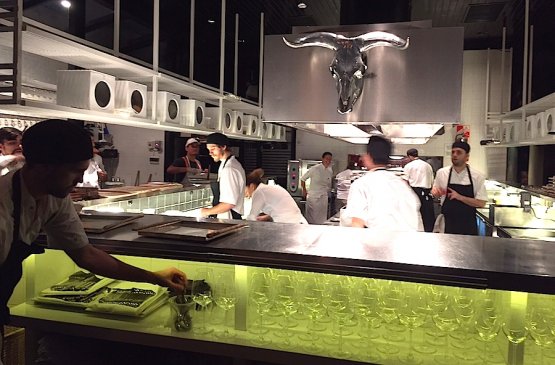Third episode
The real problem for Argentina, having started to climb to the top in the global restaurant scene is not its extent, but the disparity between the capital, Buenos Aires, and the rest of the country. This also happens elsewhere, as in London and the UK, or Copenhagen and Denmark, Lima and Peru: these are all metropolises that attract the best and in terms of fine dining unless you’re located there, it’s extremely hard to stand out. After all, it happens in the US as well, where of course Chicago, Los Angeles and San Francisco shine on their own, but the brilliant heart is always New York.
It’s easy to sell the deliciousness of Baires. Everyone arriving in Argentina enters from the main door and won’t leave, rightly so, unless they have visited the city of tango, of Boca Juniors and Jorge Luis Borges, which with its underground absorbs between 14 and 15 million inhabitants, one third of the entire population. The CocinAR projects aims at widening the horizons by making use of the Argentinian chefs shining abroad, especially in Europe, starting from Mauro Colagreco at Mirazur in Mentone, France, two Michelin stars, and, more recently, Mauricio Giovanini, with a star at Messina in Marbella, Spain. Mauro was nominated in 2013 by the Minister of Culture as an ambassador of Argentinian cuisine. The same happened recently to Mauricio but from the Minister of Tourism.

The open view kitchen at Tegui in Buenos Aires
In Spain there are many great Argentinian cooks, but unfortunately they’re mostly sous-chef and hence they’re second to those who decide a restaurant’s kitchen offer. Were they to have a restaurant of their own, they’d certainly take different, personal roads, as with
Julieta Caruso who after over five years in
Andoni Luis Aduriz’s kitchen at
Mugaritz near San Sebastian, is planning a future in her homeland.
Many sous chef and few chefs abroad are mirrored in the echoes Argentina launches outside its borders. As our hosts told us over and over again, to put it short, what’s lacking in Argentina is the Michelin Guide which with its marketing would at least legitimize many restaurants in the capital. So they have a very high opinion of the World’s 50 Best Restaurants of Latin America. Waiting to stand out in the global one as well. In the continental one, there are as many as 8 Argentinian establishments among the 50 Best. The best? German Martitegui’s Tegui, at number 9, the only to have a place in the global list too, but in the second part, at number 68. It’s a small first step. Many more, even outside of Baires will be necessary, since the eight selected are all there, where after all most of the voters (critics, journalists and blogger) live, without visiting the rest of the country that often.

Meanwhile the ministry of tourism promotes a package to be sold in tourism trade fairs, a tour touching ten different places, matching nature and history, food and wine depending on the place. It starts and ends in Buenos Aires, with stops in the north, at the Iguazù waterfalls, in the province of Salta, in Cordoba and Mendoza, and then the pearl of Bariloche, thus entering Patagonia, and down to Calafate and the Perito Moreno glacier, and then to Ushuaia and the Tierra del Fuego where, in the summer, one could also add a quick trip to the Antarctic or go back to the capital.
Around seventy chefs and patrons are grouped in the Acelga, which means chard, a vegetable chosen not by chance as its name stands for Asociación de Cocineros y Empresarios Ligados a la Gastronomía Argentina and as the leaves of the chards resemble the shape of Argentina. Since 2012 they organise the Masticar fair in May, where energy is at the highest level and where that verb [Masticar stands for chew] communicates substance under the teeth.
3. To be continued. Read the first and second episode